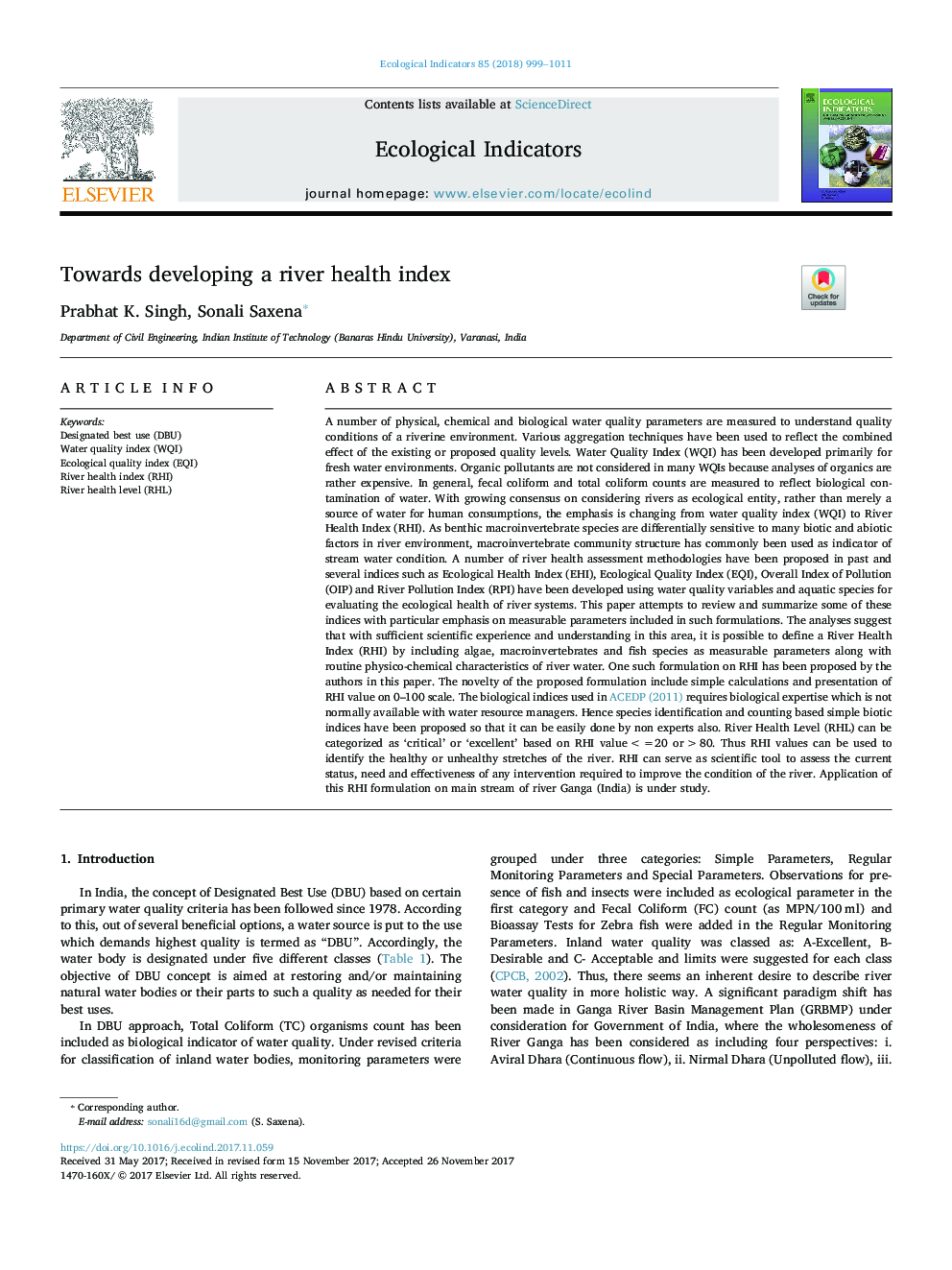| کد مقاله | کد نشریه | سال انتشار | مقاله انگلیسی | نسخه تمام متن |
|---|---|---|---|---|
| 8845779 | 1617117 | 2018 | 13 صفحه PDF | دانلود رایگان |
عنوان انگلیسی مقاله ISI
Towards developing a river health index
ترجمه فارسی عنوان
به سوی توسعه یک شاخص سلامت رودخانه
دانلود مقاله + سفارش ترجمه
دانلود مقاله ISI انگلیسی
رایگان برای ایرانیان
کلمات کلیدی
موضوعات مرتبط
علوم زیستی و بیوفناوری
علوم کشاورزی و بیولوژیک
بوم شناسی، تکامل، رفتار و سامانه شناسی
چکیده انگلیسی
A number of physical, chemical and biological water quality parameters are measured to understand quality conditions of a riverine environment. Various aggregation techniques have been used to reflect the combined effect of the existing or proposed quality levels. Water Quality Index (WQI) has been developed primarily for fresh water environments. Organic pollutants are not considered in many WQIs because analyses of organics are rather expensive. In general, fecal coliform and total coliform counts are measured to reflect biological contamination of water. With growing consensus on considering rivers as ecological entity, rather than merely a source of water for human consumptions, the emphasis is changing from water quality index (WQI) to River Health Index (RHI). As benthic macroinvertebrate species are differentially sensitive to many biotic and abiotic factors in river environment, macroinvertebrate community structure has commonly been used as indicator of stream water condition. A number of river health assessment methodologies have been proposed in past and several indices such as Ecological Health Index (EHI), Ecological Quality Index (EQI), Overall Index of Pollution (OIP) and River Pollution Index (RPI) have been developed using water quality variables and aquatic species for evaluating the ecological health of river systems. This paper attempts to review and summarize some of these indices with particular emphasis on measurable parameters included in such formulations. The analyses suggest that with sufficient scientific experience and understanding in this area, it is possible to define a River Health Index (RHI) by including algae, macroinvertebrates and fish species as measurable parameters along with routine physico-chemical characteristics of river water. One such formulation on RHI has been proposed by the authors in this paper. The novelty of the proposed formulation include simple calculations and presentation of RHI value on 0-100 scale. The biological indices used in ACEDP (2011) requires biological expertise which is not normally available with water resource managers. Hence species identification and counting based simple biotic indices have been proposed so that it can be easily done by non experts also. River Health Level (RHL) can be categorized as 'critical' or 'excellent' based on RHI value <=20 or >80. Thus RHI values can be used to identify the healthy or unhealthy stretches of the river. RHI can serve as scientific tool to assess the current status, need and effectiveness of any intervention required to improve the condition of the river. Application of this RHI formulation on main stream of river Ganga (India) is under study.
ناشر
Database: Elsevier - ScienceDirect (ساینس دایرکت)
Journal: Ecological Indicators - Volume 85, February 2018, Pages 999-1011
Journal: Ecological Indicators - Volume 85, February 2018, Pages 999-1011
نویسندگان
Prabhat K. Singh, Sonali Saxena,
